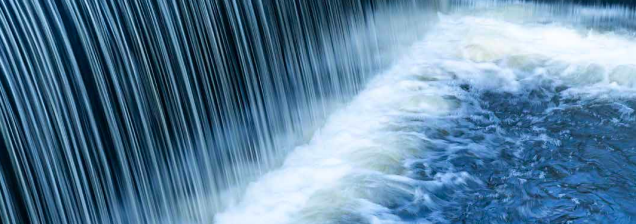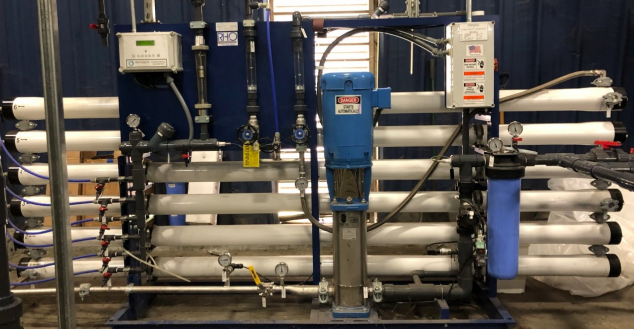Southwire 2021 Sustainability Report: Water & Wastewater
Southwire 2021 Sustainability Report
APPROACH
Southwire responsibly manages water resources through water quality and quantity policies and regulatory compliance. We prioritize operational water use in manufacturing and mill locations with high water use processes, including contact and non-contact cooling. Our approach allows Southwire to avoid environmental, financial and reputational consequences. In addition, we aim to manage and reduce our water impacts by conserving and controlling water usage in manufacturing facilities and office spaces, monitoring total withdrawal by source and using recycled or lower quality water for processes whenever possible.
Other approaches to decreasing our water impacts include careful compliance with river, stream and lake water quality standards near our sites by reducing the release of chemical and physical contaminants. In addition, we closely monitor stormwater runoff and wastewater discharge at Southwire locations near waterways to mitigate any adverse impacts on nearby communities.
Ultimately, our management approach, including quality, quantity and compliance, allows Southwire to maintain our environmental, financial and reputational performance. However, due to increasing regulatory standards and environmental concerns, we are developing a holistic water and wastewater management strategy that includes conservation measures and incorporates circular economy principles that maximize water recirculation and reuse in Southwire operations.
RESPONSIBILITIES
We must comply with strict regulatory requirements, including maintaining the appropriate permits for wastewater discharge to surface waters and local sewer systems and for managing stormwater runoff. In addition, our Southwire EHS Policy and Principles guides our use of water and wastewater. While each Southwire site is responsible for managing water use and wastewater discharge locally, ultimate accountability for our environmental performance rests with the EVP of Operations. The EVP of Operations is responsible for overseeing our water programs’ performance and reporting updates to the board, which offers strategic direction.
WATER MANAGEMENT
To help ensure the long-term quality and supply of water in the communities where Southwire operates, we closely monitor water discharge and utilize sustainable withdrawal practices.
We source non-contact cooling and steam generation water for manufacturing from municipal water supplies, groundwater and harvested rainwater. Our facilities must also maintain applicable water withdrawal permits, stormwater discharge permits, stormwater no-exposure exemption certifications and sewer discharge permits. Where water discharge capacity is available, Southwire locations discharge manufacturing process wastewater to the local sewer authority following local sewer ordinances and permits.
At the two locations where adequate municipal sewer capacity is not available, Southwire discharges to local waterways in accordance with our National Pollutant Discharge Elimination System (NPDES) direct discharge permits.
In addition, locations with stormwater exposed industrial activities are subject to NPDES requirements and must also operate under state or local permits that specify appropriate compliance procedures. NPDES permits require Southwire to meet stringent discharge requirements, and all permits and permit applications are subject to agency and public review. In cases where Southwire facilities are not required to obtain a sewer permit, water discharges must follow local sewer ordinance requirements.
We aim to exceed regulatory requirements by voluntarily reducing our water consumption and impact. In 2021, we continued to require all Southwire locations to identify and implement at least one water or energy savings project.
To help locations choose projects, the operations environmental staff provides a list of potential high-impact projects identified during water audits conducted in previous years. For example, due to the site-led water quality and use improvements of a reverse osmosis system installation in our Starkville, Mississippi location, the site reduced water consumption by almost 20% in 2021, reduced natural gas usage by 10% and produced an operational cost savings of approximately $52,000 compared to 2020.
In addition, we monitor compliance efforts and assess the impact of Southwire activities through visual inspections, automated electronic water quality alerts and sample analyses to prevent water-related incidents. All water monitoring pollution parameters are location-specific, and monitoring frequencies may be continuous, daily, monthly, quarterly, annual, or as directed by permit and pollution prevention program requirements. When warranted, Southwire implements actions such as enhanced best management practices, engineering controls and administrative procedures that are aimed to identify, address and correct negative impacts.
ENVIRONMENTAL MANAGEMENT SYSTEMS
In addition to permitting and regulatory requirements, Southwire operates four facilities with third-party verified environmental management systems (EMS). Our utility product plants in Huntersville, North Carolina; Hawesville, Kentucky; and Carrollton, Georgia are ISO 14001 certified, and our Tecate Plant is certified under Mexico’s Clean Industry Program. We have also implemented ISO-like EMS at nine other manufacturing locations. As part of the Southwire EMS process, we require each site to conduct an “aspects and impacts” analysis to identify critical site activities that may adversely affect the environment. Once we identify the critical activities, each site is required to develop and implement a management strategy, policy or plan used to track and manage these activities.
PERFORMANCE
Southwire water usage fluctuates according to weather conditions, facility product mix, operational conditions and additional factors at our individual locations.
To address facility fluctuations and increase water efficiency and reuse, we are upgrading infrastructure technology and improving the water strategy in our environmental management system. However, while upgrades are helping increase water savings, the sensitivity of some equipment has slowed our overall water reduction progress. As a result, we did not achieve our target of a 10% reduction in water use intensity by 2021 over our 2016 baseline. However, in 2021, we achieved an 11% reduction in overall water use compared to our 2016 baseline.
In addition, we continually assess our water management efforts and incorporate circular approaches such as water recirculation and reuse to maximize efficiency. We also encourage accountability and leadership for resource-saving efforts, and environmental measures are included in the individual performance metrics for leaders who are directly involved with helping the company meet environmental performance goals.



